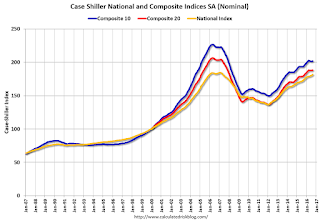WASHINGTON – It’s back to Twitter barbs at the “nasty” and “unfair” news media.
Two weeks after his election, Donald Trump’s relations with the press are as contentious as ever.
There is no honeymoon between the US president-elect and news organisations after a bruising campaign where the candidate dubbed journalists “thieves and crooks” and was himself labelled a “liar” on the news pages.
The Republican billionaire resumed his onslaught Monday during a closed-door session with high-ranking television executives where, despite expectations of fence-mending, he reportedly gave them a dressing-down over their coverage of the 2016 race.
On Tuesday, Trump cancelled then rescheduled a meeting with the New York Times, firing off a fresh broadside over what he called “nasty” coverage by his hometown daily.
The property tycoon, who has not held a news conference since his election, complained that the terms of the interview “were changed at the last minute,” an account the Times disputed.
Both Team Trump and the newspaper later confirmed the meeting was back on, after the two sides agreed on an off-the-record session with the paper’s publisher followed by an on-record interview.
The Times later reported that Reince Priebus, the incoming White House chief of staff, had misinformed Trump – telling him the terms had changed – in an apparent bid to prevent the interview, fearing he might face questions he is unprepared to answer.
351634
2016-11-09 16:14:33
 Photo Gallery
Photo GalleryTrump announced he would meet the influential daily after all in an upbeat tweet saying, “Look forward to it!”
But that followed a stream of hostile early morning tweets assailing what he called a “failing” paper for continuing to “cover me inaccurately and with a nasty tone!” .
The dust-up with the Times came a day after Trump held an off-the-record chat with television executives and news anchors, with comments filtering out indicating Trump’s displeasure over coverage.
New Yorker editor David Remnick, citing sources attending the session, said Trump complained that NBC News used unflattering photos showing his double chin, and asked for “nicer” images.
Attendees said they were taken aback at the tone from the president-elect, who repeated claims of insulting and inaccurate coverage.
“I really am offended,” one of them was quoted as saying. “This was unprecedented. Outrageous!” Far from sobered by his heavy new responsibilities as head of state, one participant was quoted as saying Trump “is the same kind of blustering, bluffing blowhard as he was during the campaign.”
Trump spokeswoman Kellyanne Conway offered a different version, calling the meeting “cordial” and “productive,” adding that “there was no need to mend fences.”
US news organisations dug into a host of Trump controversies as he campaigned for the world’s most powerful office.
These included allegations by women that he had harassed or sexually assaulted them, his past failures as a real estate developer and indications that he avoided paying taxes for years.
The Republican pushed back hard – charging the election was being “rigged by corrupt media pushing completely false allegations and outright lies” and colluding to hand victory to Democrat Hillary Clinton.
Trump’s latest clashes with the media would seem to foreshadow a stormy relationship when he moves into the White House in January.
“I think he wants to scare them,” said Lucy Dalglish, dean of journalism at the University of Maryland: “He wants to chill them. He is retaliating. He feels he was not treated fairly and he is trying to get them to cower. But that’s the last thing you want to do with some of these people.”
Some groups have already complained Trump has not yet guaranteed “pool” media access, as has been customary in recent history, where a small group of journalists accompanies the president-elect on all public events and meetings.
“It’s not the media that needs this, it’s the pubic, and he doesn’t seem to understand the role that an independent, freely functioning media plays in a democracy. And not to recognise that role is troubling,” said Dalglish.
Joel Kaplan, associate dean of journalism at Syracuse University, agreed that the media and Trump are in uncharted waters.
“There is no precedent for the relationship between Trump and the press,” Kaplan said.
“Even those (presidents) who didn’t have the best relationship going in understood the role of the press and tried to court individual members.” Kaplan noted that Trump’s hand is helped by a deepening distrust of the news media by the US public, but claimed that should not be a reason to change coverage of the White House.
“I don’t think the general public can have a much lower opinion of the news media and honestly, the news media shouldn’t care,” he said.
“The role of the news media is to inform the public. Once that happens, the public is responsible for what it does with that information.”





































